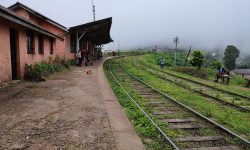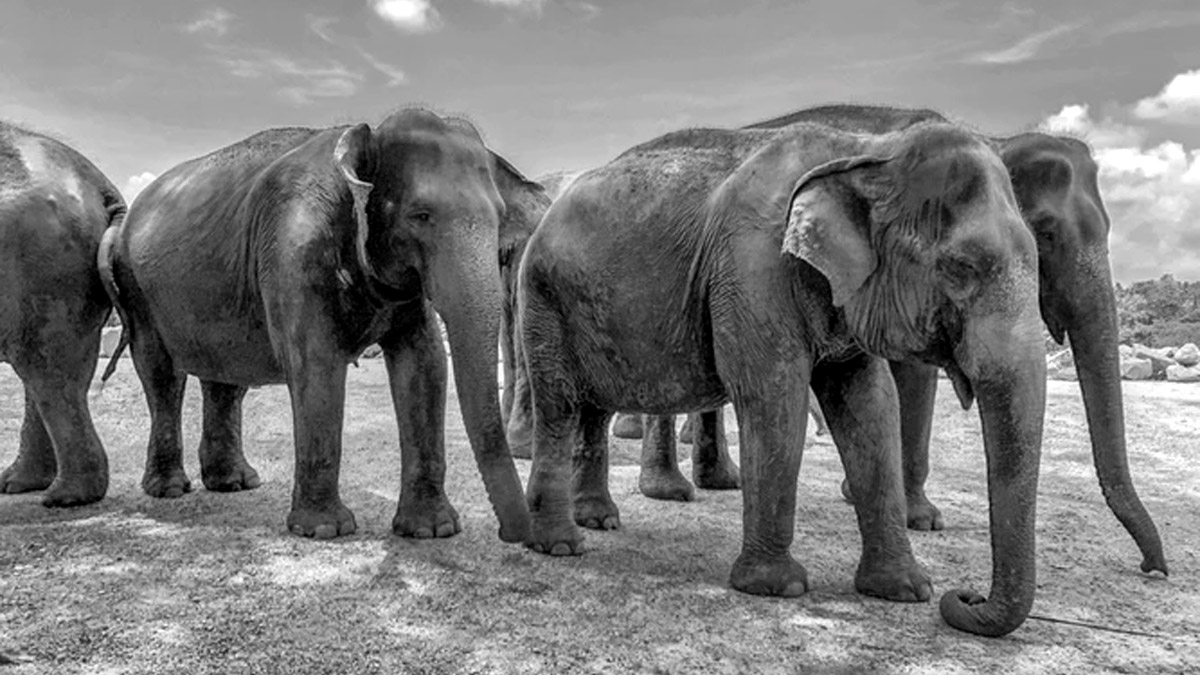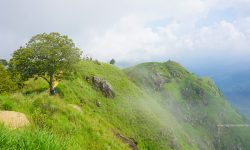Anuradhapura sacred City
Anuradhapura Sacred city
Anuradhapura is one of the most ancient cities to travel Sri Lanka tours. This place is filled with marvellous ruins of palaces, Temples and carvings. And it is the main reason why most tourists travel Sri Lanka tours. It is believed that the city of Anuradhapura holds a history that runs back to Protohistoric iron age. So if you are interested in witnessing some of the greatest ruins of the protohistoric period when you travel Sri Lanka tours, Anuradhapura sacred city is highly recommended.
History
According to historical excavations, evidence proves the human inhabitations during the period of protohistoric iron age from the citadel of Anuradhapura. Moreover, as stated by chronicles, King Pandukabhaya emerged and formally planned the city of Anuradhapura made it the main city of his kingdom during the 4th century BC. Introduction to Buddhism is one most important occurrence that happened in the Anuradhapura kingdom. It was during the reign of Devanampiyatissa that Buddhism was first introduced to Sri Lanka. And there onwards Buddhism became the main religion in Sri Lanka. Later on, Anuradhapura became a major intellectual centre of thera vada Buddhism when the royal family of Sri Lanka strongly supported Buddhism. As a result, the city moved forward with the Buddhist culture which strongly evident in the buildings. The city flourished claiming a most complex irrigation system which leads to the construction of large lakes which survived to the date.
About UNESCO World Heritage
Anuradhapura city which was found in 4th century BC was the first ancient capital of Sri Lanka. It served as the capital city during that time and brought forth religious cultural and historical development of one of the greatest civilizations of the world. Its well-preserved ruins have attracted the attention throughout the world and it was named as UNESCO World Heritage site for its great historical value.
ATAMASTANA
Jayasiri maha bodhi
This is the most renowned Bodhi tree in Sri Lanka. This is because it is believed to be the southern branch sapling of the bodhi tree under which Lord Buddha achieved enlightenment in India. And it is also the oldest living human-planted tree in the world with known planting date. This tree was brought to this holy land by Ven. Sangamitta, the sister of Ven. Arahath Mahinda who introduced Buddism to Sri Lanka. And the tree was believed to be brought and planted in Anuradhapura in 288 BC. Over 2000 years this tree has been tended and guarded by an uninterrupted succession of guardians.
The Uda Maluwa is 35 ft above the ground and the wall of it was believed to be constructed by the king Kirthi Sri Rajasinghe in order to protect it from wild animals such as elephants. And the accompanying bodhi trees or the pariwara bo trees were planted under the leadership of the late Ven. Pallegama Rewatha Thera in order to camouflage and protect the Sacred bo tree from a natural disaster like heavy wind and rain.
It is a prominent feature that almost all the Sri Lankan leader seeks the blessings of Sri Maha Bodhi before starting any important work.
Ruwanweliseya
Ruwanweliseya which was built by the king Dutugaunu is a stupa in Sri Lanka which astonishes the people around the world due to its architectural qualities. It is one of the sacred Buddhist stupas worshipped by many Buddhists around the world. It is also named Mahathupa, Swarnamali chaithya Suvarnamali maha ceti, and Rathnamali dagaba. Even though King Dutugamunu who was considered as one of the greatest kings at that era which defeated the Chola invasions by defeating the King Elara, could not live to see the completion of this dagoba.
Due to wading wars and invasions, this stupa has been damaged several times in the past. And today its height is 55m which is much less than the original height. And also the original bubble has been changed during the reconstruction process done with the time.
Thuparamaya
This Dagoba is believed to be the first stupa to be established in Sri Lanka. After introducing Theravada Buddhism to the country by Ven. Mahinda Thera, the King Devanampiyatissa built the stupa and named it as Thuparamaya. This dagoba was embodied with the collarbone of the Lord Buddha. The name Thusparamaya denote the meaning stupa and Aramaya which means the residential complex for monks. This dagoba is the oldest dagoba in Sri Lanka and probably the oldest visible dagoba in the world as well.
Thuparamaya was built during the 3rd century BC and it had gone through some major reconstruction in 1862 which lead to restoring its heap of paddy shape into a more conventional bell shape and also to a height of 19m. some of the marvellous features that can be seen in this dagoba are the surrounding vatadage’s slender, capital-topped pillars and the four concentric circles .it is evident that, originally, there were 176 pillars and 41 of them still stands. According to scholars, these pillars must have supported a huge wooden roof but there was no evidence to support this theory.
LOVAMAHAPAYA
Lovamahapaya which lies in between Ruwanweliseya and Sri Maha Bodhi in ancient Anuradhapura city. And it is also one of the eight sacred places or atamasthana in Sri Lanka. It owns a history of 200 years as it is believed to be built by king Dutugamunu. And due to its magnificent roof, that was covered with bronze tiles this place gained the name of Lohaprasadhay or the Brazen Palace. According to the archaeological evidence, this place believed to have accommodated around 1000 monks and attendants in its nine storeys. This place has undergone several reconstructions which lead to losing its originality slightly and the last rebuilt was done by king Parakramabahu during the 12th century.
ABHAYAGIRIYA
Abayagiriya is one of the five largest major viharas and also one of the seventeen religious’ units in Anuradhapura. This dagoba consists of magnificently carved moonstones and balustrades, elaborated ponds and a great wall encircling the place. Due to the vague evidence provided by books and maps, it is mostly confused by Jethawanaramaya, so the exact time period which it was built is confusing as well. But it is believed to have built during the period of 1st or 2nd century BC and has provided facilities for nearly 5000 monks at the time. Abayagiriya has many meanings to its name such as ‘Hills of Protection’ or ‘Fearless Hill’ and some claims that the name Abayagiri was named after a local Jain monk named ‘Giri’. Moreover, this monastery was a part of the school of the secret forest that studied both Mahayana and Theravada Buddhism.
This dagoba had undergone several reconstructions to reach its peak 75 height. And this was built in the northern monastery or the Uttara vihara. The surrounding of the dagoba consists of interesting bas-reliefs, a large slab with a Buddha footprint and unusual moonstones made from concentric stone slabs.
Jetavanaramaya
Jetavanaramay is a stupa located in Jetavana Monastery in the sacred world heritage city if Anuradhapura. This stupa was built as a result of the destructions of several Theravada Stupas due to the conflicts between Theravada and Mahayana sectarians during the 4th century. King Mahasena who started to build this stupa but ultimately it was built and finished by his own son Meghavanna. This stupa has been embodied with the sash belt tied by Buddha.
According to archaeologists, the original height of the stupa must have been over 100m but today is about 70m which is also similar to the height of Abayagiri. The monastery behind Jethavanaramaya could accommodate around 3000 monks. And magnificently massive doors with the height of 8m and then another one that high 3m underground once protected Buddha images and his teaching stand still even for today.
Mirisaveti stupa
After defeating King Elara, King Dutugamunu had built Mirisaveti stupa enshrining Buddha relics in the sceptre. The story goes like this; once king Dutugamunu had gone for a bath after placing the Buddha relics in the sceptre and leaving it safely in a place before having the bath. Upon returning after the bath the king could not move the sceptre from where he placed it. So, he built Mirisaveti stupa enshrining the sceptre. It is also said that he named the stupa as Mirisaveti in order to atone for having a chilly curry without offering it to the sangha first. Mirisaveti land covers an area of 50 acres. Even though this stupa had undergone renovation several times it had dilapidated over time. The stupa that we witness today is the renovation done by the Cultural Triangle fund in later years.
LANKARAMAYA
Lankaramaya is another sacred place that is known as one of the places in eight sacred places or atamasthana.it is a stupa that is known to be built by King Valagamba in Anuradhapura. Due to lack of information about this stupa, nothing is revealed about its ancient form of the stupa. Later it was renovated to the stupa that we see today. It is evident that there has been a house built around the temple or a vatadage. steps hold a diameter of 45 feet whereas the circular courtyard is 1332 feet in diameter.


